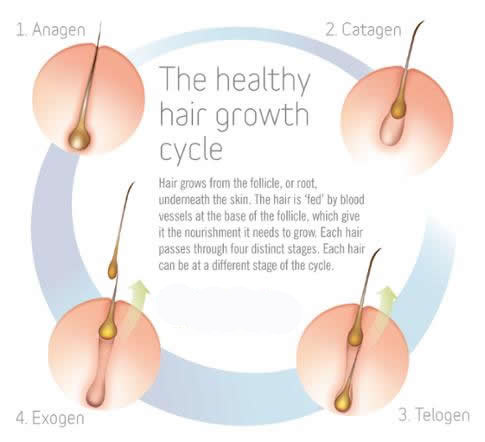
Hair loss due to normal anagen-catagen-telogen cycling activity is usually recognized as normal by the individual man or woman; it is the amount of lost hair he or she is accustomed to seeing. Over the course of several cycles, this normal hair loss is recognized as temporary, the lost hair replaced by new growth from follicles that shift from telogen (resting) into anagen (growth) phase.
If an unusually large number of lost hairs begin to appear in the course of grooming, or on one’s pillow or clothing, the “temporary” nature of the hair loss may be questionable. The person may begin to ask: “Am I beginning to lose hair permanently. Am I going bald?” The question may be especially stressful for men who have close male relatives with hair loss. Androgenetic alopecia (called male-pattern hair loss when it occurs in men) has a genetic basis-that is, it “runs in the family”.
A man who knows he has a family history of androgenetic alopecia may worry about the daily loss of more hair than he is accustomed to observing. While a man who has a family history of male-pattern hair loss is at higher risk for androgenetic alopecia, a man cannot be sure that the hair loss he observes is an initial sign of male-pattern hair loss. In fact, many men do not begin to notice hair shedding until they begin to notice hair thinning on the scalp. Androgenetic alopecia is known to have a genetic basis, but the patterns of genetic inheritance have not been worked out with precision. A man may carry the gene or genes for androgenetic alopecia; it is difficult to predict whether he will experience balding. If relatively large daily loss of scalp hair continues over time, it becomes more likely that the man is developing the visible signs of male pattern baldness.
A man in this position need not wait for evidence of a substantial permanent hair loss to seek advice or begin treatment. He can benefit from a consultation with a physician hair restoration specialist. The physician will diagnose the cause of hair loss and may recommend a medical treatment to slow or reverse hair loss at the earliest stage.

